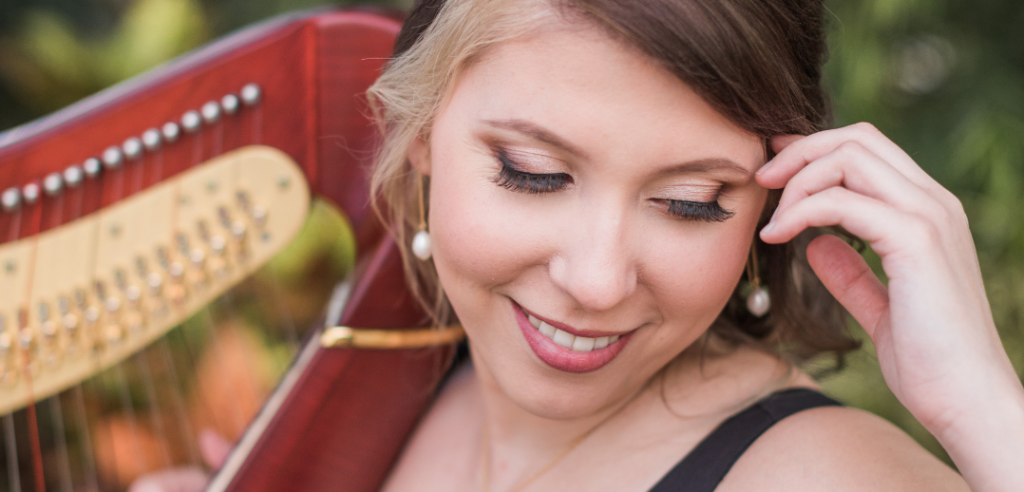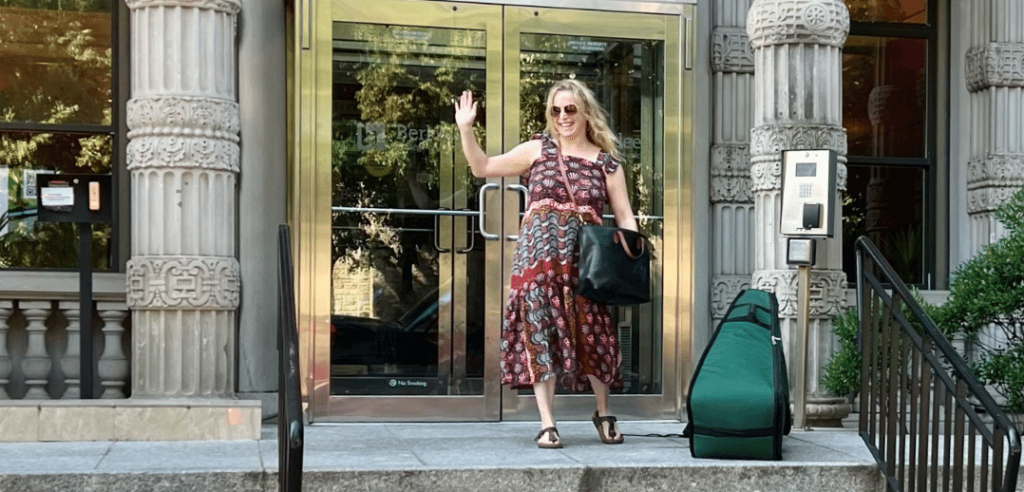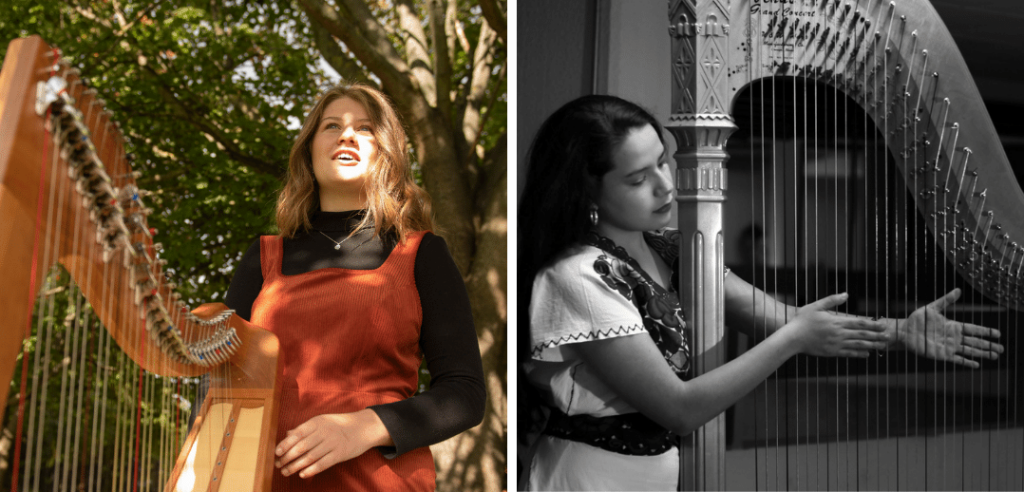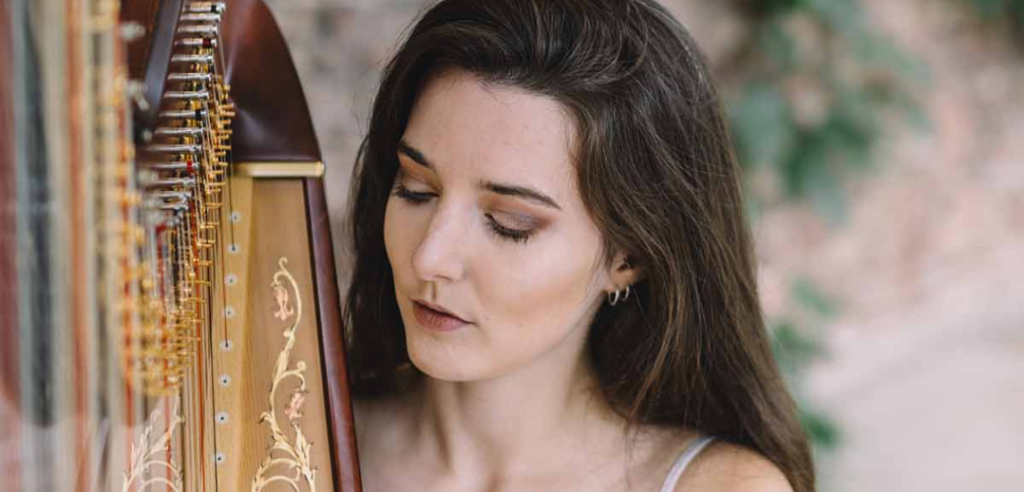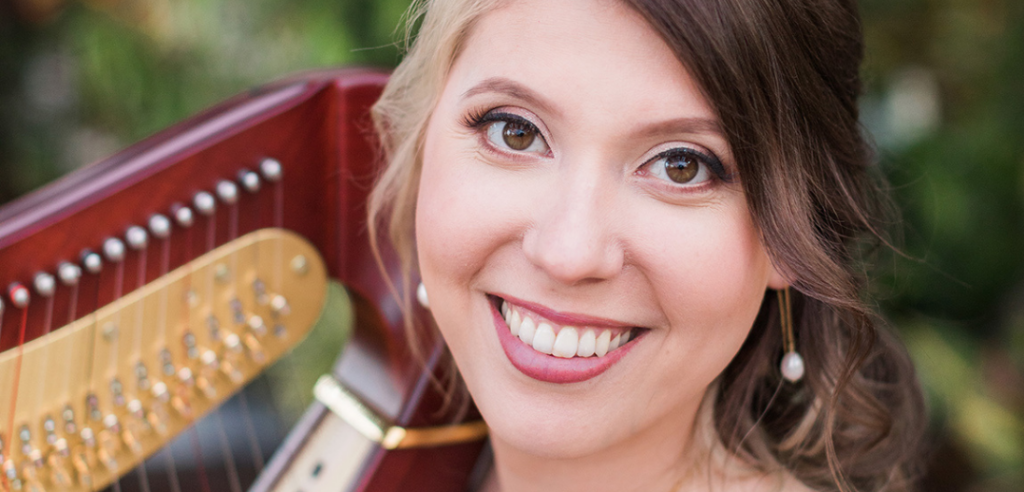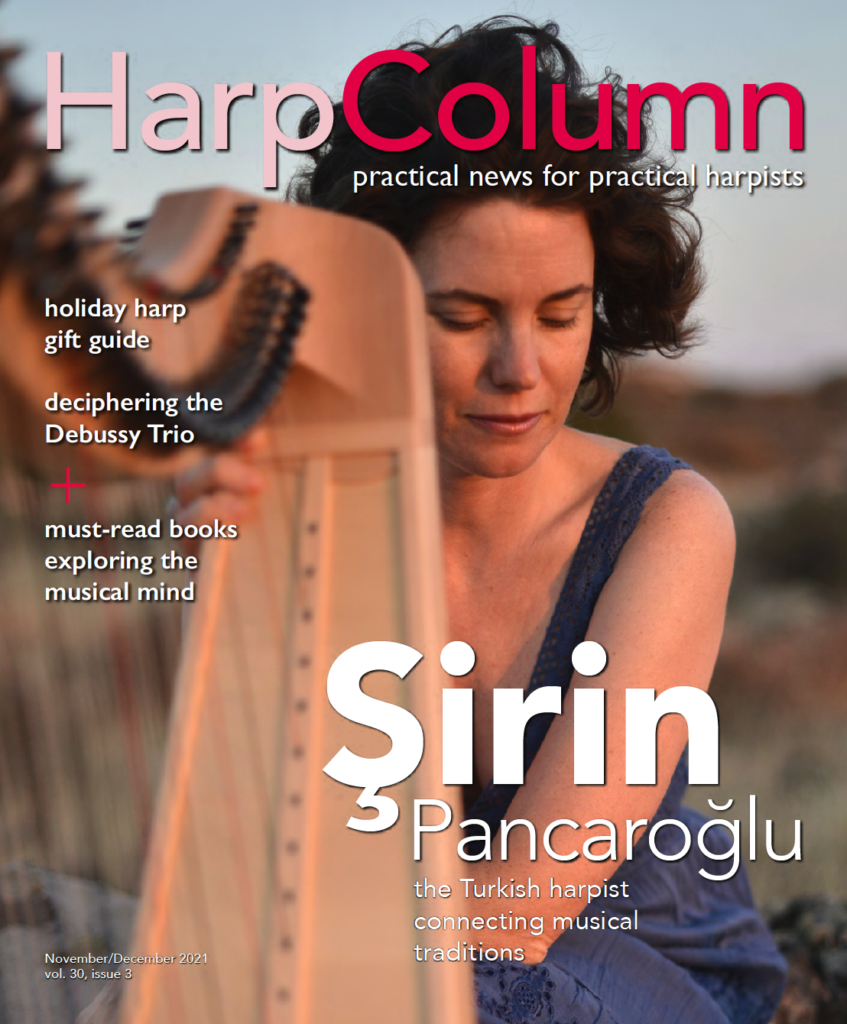Editor’s Note—In our new series, Practice Makes Harpist, we are following nine harpists pursuing different paths with the harp to see how their practice evolves and shapes their musical experience. Four of these nine harpists are currently enrolled in higher education. This installment takes us to Ireland and Mexico, where two budding harpists are practicing towards their goals.
Laura Penman
Age: 19
Area of Study: B.M. in Traditional Music Course, Clàrsach, expected 2024
Long-term goal: Perform and collaborate with other instrumentalists in groups to create music. Continue to build a collection of my own arrangements/compositions for clàrsach and possibly release my own music book in the future.
Short-term goal: Perform solo and ensemble concerts in various settings such as Celtic Connections and the end-of-year recital at the RCS.
Laura Penman grew up in Edinburgh, Scotland. At the age of three, she started learning Scottish Gaelic and later attended Gaelic primary school. Her school promoted traditional music, including lessons with the clàrsach, the Gaelic word for folk harp.
Over three years she started playing three instruments—the fiddle at age 7, the harp at 8, and the piano at 9—but the harp soon became her focus. When she began playing she recalls, “It felt like my instrument.” Although the lessons were in English, she learned traditionally, by ear and without sheet music. Soon she found herself immersed in the traditional music community. “I love being able to sit and play together and make music and always draw on it. If I don’t have my clàrsach, there’s usually a piano in the corner where I can play the chords.”
Penman’s teacher, Charlotte Petersen, saw her potential and introduced her to The Royal Conservatoire of Scotland (RCS) Juniors program. She spent Saturdays participating in traditional music classes and had individual clàrsach lessons with Jessica Burton. Her experience in the Junior program boosted her confidence, and she was accepted into RCS’s undergraduate honors program in traditional music for harp performance in 2020.
Learning the Celtic way
A typical lesson from her university teachers, Corrina Hewat and Heather Downie, includes learning a new traditional tune, either by ear or from sheet music. Laura then spends the week arranging the tune to present it at their next lesson. Occasionally she digs into archives and collections to discover a tune on her own.
Her first year at the music conservatory changed her view of technique. “Before, technique was just something that I practiced only for the Traditional Music Graded Exams. I didn’t really have fun doing [the exercises], and I only practiced techniques for the exam and then didn’t use them again. I made a conscious decision to have 15 minutes [technique] exercises at the beginning of every practice—it’s made such a difference in my playing this last year. I feel like I’m in more control of my playing.” Penman found ways to make the practice more interesting. “I like to take a basic exercise and try it in different ways, varying rhythms and improvising with them.”
When we spoke shortly before the end of the summer holidays, Penman was in summer practice mode. “[I’m] basically doing whatever I want—composing, playing, or improvising.” During the year, she starts her practice with technique and then picks two specific points to focus on. She explains, “Usually, it’s learning a piece up to a satisfactory standard and then spending the second half on a new tune. I also like to leave time to improvise and compose.” Often her improvising is a base for her composing.
After a year focused on solo work, Penman hopes to play in small groups and duos more this year. She’s also preparing for a final performance. Throughout the year, she’ll find, arrange, and perfect the pieces for a thirty-minute program.
Although there will be a lot on her plate, she tries to create space to balance life and studies: for example, she recently took a five-day backpacking trip on the Isle of Arran, Scotland, with friends.
Jaqueline Aguirre
Age: 21
Area of Study: B.M. in Harp Performance, expected 2024/2025
Long-term goal: To finish school and start my career.
Short-term goal: Study for and perform my first concert.
Jaqueline Aguirre grew up in Mexico City with a passion for traditional Mexican music. Sones music (see sidebar) provided the soundtrack to her childhood. At six, she enrolled at the Sones of Veracruz in Michoacán, Jalisco—a music and dance school dedicated to the folk tradition. For the first few years, she learned music appreciation, dance, theatre, voice, and corporal expression. At age 8, she decided she’d like to play the violin. However, her mother had other ideas and encouraged her towards the harp. She gave it a try and has never looked back.
Aguirre soon joined a traditional ensemble of Mexican music, “Alegría del Son,” performing throughout Mexico and Texas. Her friends also attended and played, creating a very social learning experience.
Over time, a friend who plays classical harp kept encouraging Aguirre to give this genre of music a try. She wrote to Baltazar Juárez, principal harpist with the National Symphony Orchestra of Mexico, to ask if he would take her on as one of his classical harp students, and he agreed. In 2015 Aguirre started taking lessons with him at Centro Cultural, Ollin Yoliztli, home to the Mexico City Philharmonic Orchestra.
Folk sounds
Son Mexicano is a traditional style of Mexican folk music and dance that has many regional varieties. Son means “sound” in Spanish. Each region has a different name, for example Sones de Tierra Caliente and Sones de Tixtla. Most people have likely heard of Sones de Jalisco, also known as mariachi.
“It was tough because I had to start from the beginning, with one finger and a first harp book,” Aguirre recalls. “I used to play, travel, and teach, but I was at zero again.” She also had to learn to read music; up until then, she had played entirely by ear.
During the pandemic, Aguirre passed her entrance exam for classical harp performance and is now entering her second year of study at Centro Cultural, Ollin Yoliztli. Working on her own due to lockdowns has taught her a lot about practicing. At first, she suffered from back pain, which led her to pay attention to her body. “It wasn’t easy when working online. My teacher can’t see everything happening, so I have to pay attention to my posture and what my feet are doing.”
With her practice time, she aims for five or six hours a day. “I try to be flexible about when I practice, but always put in the time. First, I make a plan for the day, do little exercises, stretching and then start with the technique, scales, arpeggios, and etudes. I practice for 60 minutes and then take a break, and repeat.”
She continues to play the folk harp, borrowing things she has learned with the classical harp to improve her tone and technique with the folk harp.
Aguirre also wants more opportunities to play in ensembles, chamber music groups, and orchestras. She’s recently been accepted by the Carlos Chávez School Orchestra, which will help her along the way.
As for the soundtrack of her life now? Aguirre still loves mariachi, but her tastes have expanded. “[I enjoy] classical music, of course, but I think it’s important to listen to all genres.”
Listening to her practice you might hear her taking a break by improvising something she’s recently listened to—Queen, Bjork, or Black Sabbath—just for fun. •









